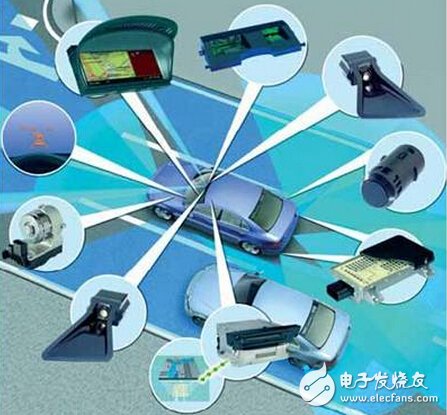From the electric windows of the early 1950s to the latest car driving systems of today, the high-end features of luxury cars have finally been applied to mid-range and economical cars over time, becoming a must-have electronic and electrical system. . The recently emerging Advanced Assisted Driving System (ADAS) technology is no exception. As an example, Europe's Ford Focus vehicles now feature adaptive cruise control (ACC), automatic braking and active lane keeping – all of which were previously exclusive to luxury cars. Even the economical Kia Motors has a rearview camera. However, with the application of ADAS technology to relatively inexpensive vehicles, this presents a dilemma: the need to implement large amounts of computing resources at very low prices. ADAS technology can be used not only in luxury cars, but partly because of competition considerations, but not the only factor. Government regulations are also an important factor. For example, in the United States, the National Rapid Transit Authority is in the process of enacting a policy to force the installation of rearview cameras, and it is expected that the number of on-board cameras will reach 60 million by 2018. The discount on insurance for vehicles equipped with ADAS is another factor driving the widespread use of ADAS. Such offers have a certain statistical significance. When the driver starts to deviate from the lane, the system will issue an alarm. At night, the system can also enhance the driver's visibility, thus avoiding the accident and saving lives. The decisive factor in the widespread adoption of ADAS is cost. Although ADAS technology is becoming more and more complex, advances in sensor and processor technology—incorporating multiple functions into fewer components—can now support engineers designing ADAS at affordable prices for mid-range and even economical cars. application. Reduced costs and reduced complexity through functional integration are key factors driving the widespread adoption of ADAS technology in a wide range of vehicles. Functional diversity In all of its expectations, ADAS technology has also brought many challenges to the automotive industry. Just as many technologies are in their early stages, ADAS applications have involved many development directions, and it is not clear which direction will ultimately drive the market. At the time of this writing, Hitachi focused on using two forward camera multiplex sensors to detect objects 100 meters away. This technology is called "eye vision" and has been applied to the 2013 Legacy and Outback models. Denso recently demonstrated a sleepiness detection system that uses an infrared (IR) camera to look at the driver's face and determine if the driver's eyes are open. If the eyes are closed, the driver may have gone to sleep. Finally, Aisin is launching a lane detection system that uses a rearview camera—a cost-effective way to monitor the position of the vehicle relative to the lane markings. It combines GPS and road map data to determine the current position of the vehicle relative to the road ahead. This article will provide a more detailed introduction to the rapid application of ADAS technology in a broader market. 8Dn9 Gas Insulated Metal Enclosed Switchgear Square D Switchgear,Switchgear For Generator,Metal Switchgear,Siemens Switchgear Products Shandong Shunkai electrical equipment co., LTD. , https://www.chinasdsk.com
October 24, 2020